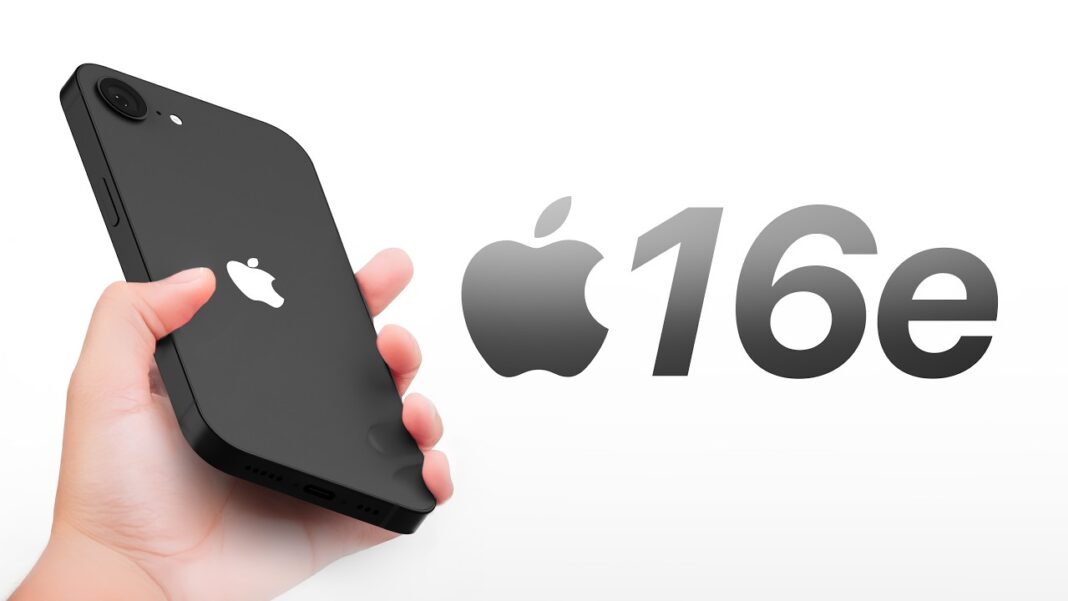|
Getting your Trinity Audio player ready...
|
Apple Unveils iPhone 16e: A More Affordable Model with Cutting-Edge Features
Edited by: TJVNews.com
Apple has officially launched the iPhone 16e, a more affordable addition to its lineup, priced at $599. The announcement, made on Wednesday, signals a strategic shift as the company seeks to boost sales amid a period of mixed financial performance. According to a report on the CNBC website, Apple’s overall iPhone sales dropped by 1% in the December quarter, despite generating an impressive $69 billion in revenue from its flagship product.
With a modern design, Apple’s A18 chip, and support for Apple Intelligence, the iPhone 16e is positioned as a budget-friendly yet powerful alternative to its more expensive counterparts. As the CNBC report indicated, this move aligns with Apple’s ongoing efforts to expand its ecosystem, ensuring that a wider audience can access its latest innovations at a lower price point.
Unlike previous budget models, the iPhone 16e does not retain the older iPhone SE design but instead adopts the modern aesthetics of Apple’s flagship models. According to the information provided in the CNBC report, the device features a Face ID scanner, eliminating the home button and fingerprint sensor, which had been a hallmark of earlier entry-level iPhones. The notch at the top of the screen remains, housing sensors and the front-facing camera.
The iPhone 16e is powered by Apple’s A18 chip, the same processor found in the premium iPhone 16 and iPhone 16 Pro models. As the CNBC report explained, this means the iPhone 16e can run all the same applications and games as Apple’s higher-end models, offering a seamless user experience despite its lower price. The phone is available in two classic color options—black and white.
One of the most notable technological advancements in the iPhone 16e is the introduction of Apple’s first-ever in-house cellular modem, known as C1. CNBC reported that Apple has previously relied on Qualcomm modems for its iPhones, but the transition to a self-developed modem could signify a long-term shift toward greater control over its hardware components. This move aligns with Apple’s broader strategy of reducing reliance on third-party suppliers while optimizing efficiency and integration within its devices.
Despite these technological improvements, the iPhone 16e has a single rear camera, unlike the dual or triple-lens systems found in more expensive models. While this may seem like a downgrade, Apple’s software-driven camera enhancements could still provide users with high-quality photography and video recording capabilities.
Apple’s decision to introduce a new budget-friendly iPhone is not just about affordability—it’s about expanding its user base and driving ecosystem growth. The CNBC report said that low-end iPhones play a crucial role in attracting new customers, many of whom later upgrade to more premium models or invest in Apple’s services like iCloud, Apple Music, and the App Store.
A key feature of the iPhone 16e is its compatibility with Apple Intelligence, making it the cheapest iPhone to support Apple’s AI-driven features like image generation and notification summaries. Before this launch, only the iPhone 16 and iPhone 15 Pro models had access to these AI capabilities. CNBC suggests that by making Apple Intelligence available on a lower-cost device, the company is encouraging adoption of its AI ecosystem among a broader audience.
Since 2016, Apple has maintained a tradition of offering a cheaper iPhone SE to round out its lineup. According to the information contained in the CNBC report, the last iPhone SE model, released in 2022, was priced at $429—significantly lower than the new iPhone 16e. However, the SE models typically reused older iPhone designs, such as the iPhone 8 chassis, with updated internal components to keep them relevant.
With the iPhone 16e, Apple appears to be shifting away from the SE model approach, opting instead to introduce a fresh design with modern hardware rather than reusing outdated frameworks. CNBC reported that once the remaining iPhone SE stock sells out, no future iPhones will feature a fingerprint scanner, marking the end of an era for Touch ID.
The launch of the iPhone 16e also highlights a significant shift in Apple’s product announcement strategy. Historically, Apple’s new iPhones were revealed live on stage at highly publicized events in September, with CEO Tim Cook and other executives showcasing the latest technology at Apple Park in Cupertino, California. However, Apple has increasingly favored more subdued product launches, often unveiling new hardware through press releases rather than large-scale presentations.
In 2020, Apple moved away from live in-person events, instead streaming pre-recorded marketing videos on its website and YouTube channel. In the last year, as was indicated in the CNBC report, Apple has begun quietly releasing products with minimal fanfare, such as its new Mac lineup last September. The iPhone 16e announcement followed this new strategy, with a simple press release rather than a flashy keynote event.
Interestingly, CNBC reported that Apple CEO Tim Cook hinted at the launch last week, posting a cryptic message on social media: “Get ready to meet the newest member of the family.”
This subtle approach suggests Apple may be testing whether its products can still generate hype without a traditional event, potentially reshaping how the company markets new devices moving forward.
The launch of the iPhone 16e at $599 positions Apple more competitively in the mid-range smartphone market, where it faces increasing pressure from Android manufacturers offering powerful devices at lower prices. The CNBC report explained that Apple’s decision to introduce a more affordable, modern iPhone comes amid a decline in overall iPhone sales, signaling that the company is looking for new ways to drive customer adoption.
By incorporating Apple Intelligence, using the same A18 chip as flagship models, and introducing its first proprietary cellular modem, the iPhone 16e delivers high-end performance at a lower cost. The CNBC report suggested this strategy will help Apple retain existing customers while attracting new users into its ecosystem, strengthening its hold on the smartphone market.
Moving forward, it will be interesting to see whether Apple continues with these quieter product launches or returns to its signature keynote events. But one thing is clear: the iPhone 16e is a calculated move to expand Apple’s customer base and reinforce its technological dominance, all the while maintaining premium branding at every level.




